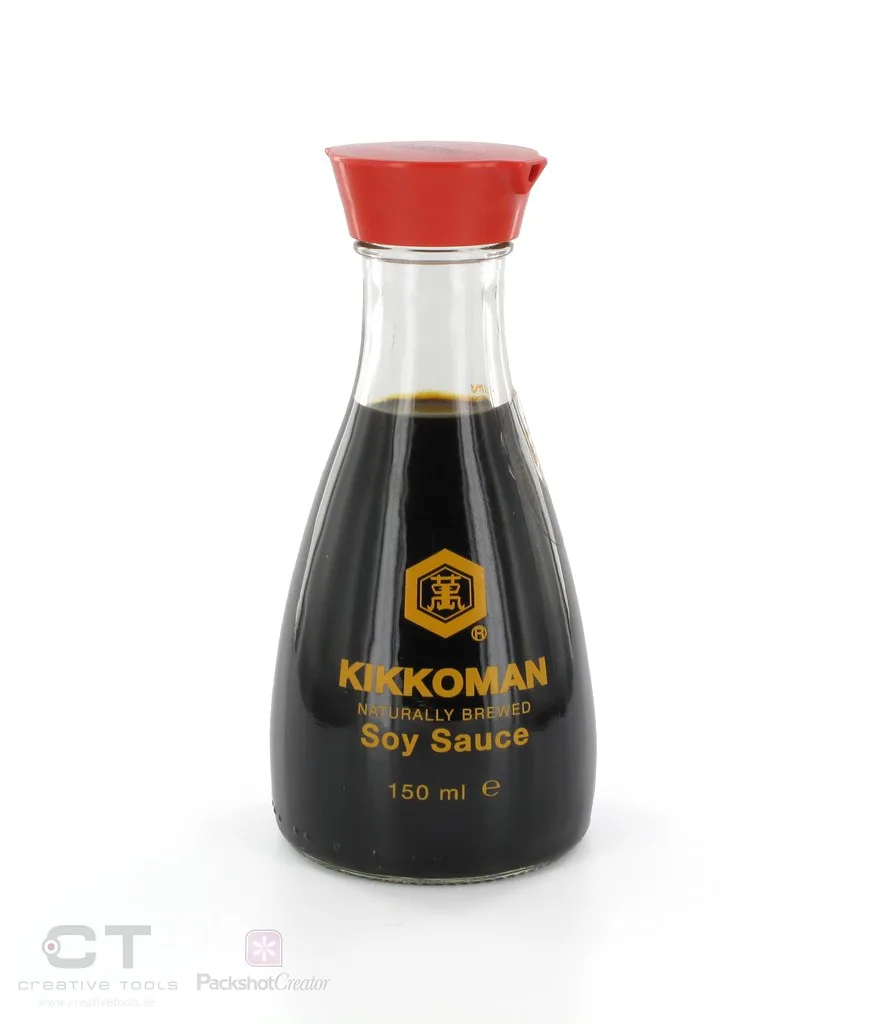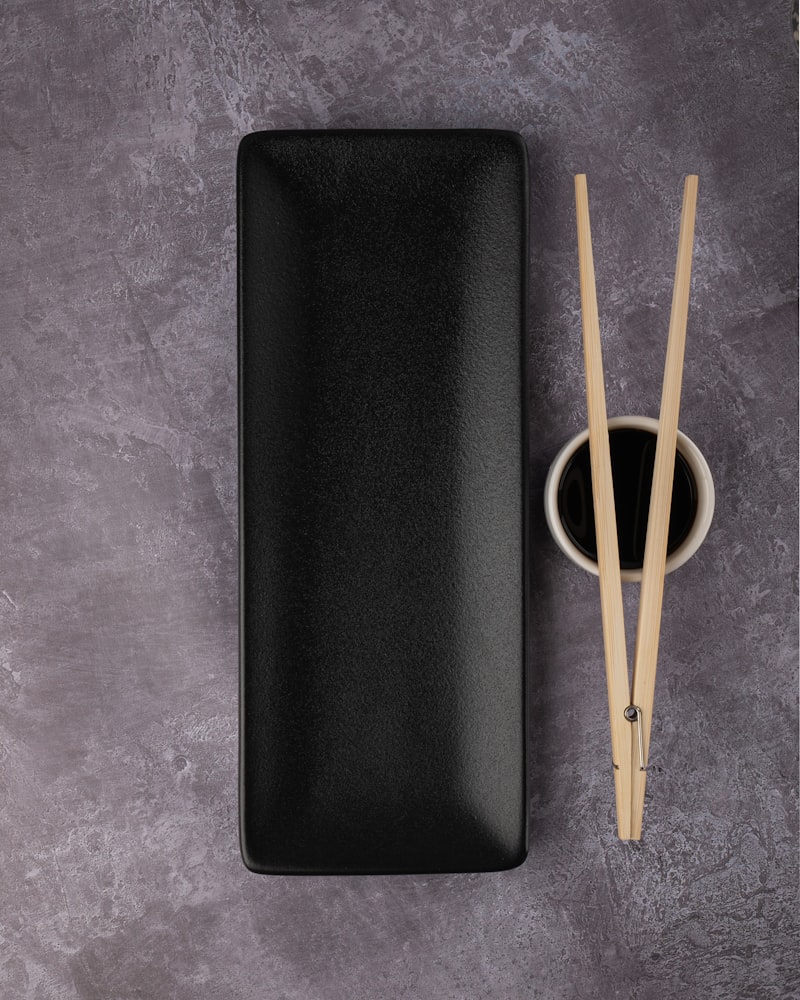In a Nutshell:
- Shelf life: Unopened soy sauce lasts months (if not years) beyond the expiration date. Once opened, it maintains peak flavor for six months to a year but stays okay for much longer.
- Spoilage signs: Discoloration, off smell, or mold growth are indicators that your soy sauce has gone bad.
- Storage: Keep soy sauce in a cool, dark place (like a pantry) and tightly seal the container after each use. Consider refrigeration after opening.
Soy sauce is the liquid gold that adds depth and flavor to countless Asian cuisine dishes.
And if you’ve got a bottle (or three) in your pantry, you might be wondering about the soy sauce shelf life or the best way to store soy sauce. Perhaps you’ve even come across a bottle of tamari sauce and thought, “Hmm, does this stuff ever go bad?”
That’s where this article comes in.
In it, we’ll give you the lowdown on how to keep your soy sauce at peak flavor, when it’s time to say goodbye, and how to store it properly so you can continue enjoying your favorite dishes without a second thought.
Let’s dive in!

Table of Contents
- How Long Does Soy Sauce Last?
- How to Tell If Soy Sauce Is Bad?
- Changes in Soy Sauce That Are Okay
- Does Soy Sauce Need to Be Refrigerated?
- How to Store Soy Sauce
How Long Does Soy Sauce Last?
Unopened soy sauce lasts for months beyond the expiration date. After opening, soy sauce retains best quality for around six months to a year but stays okay for much longer.
As long as it’s sealed tightly, it’ll likely taste okay for a few years, especially if you refrigerate it.
Like other condiments such as fish sauce, oyster sauce, or hoisin sauce, the shelf life of soy sauce depends on storage conditions and whether it’s opened or unopened.
That’s the high-level overview. Now, let’s talk about the details.
Unopened Soy Sauce
The shelf life of soy sauce, marked by the date printed on the label, is usually between 18 months and two years, depending on the brand. But as a fermented condiment, it can last for up to a few years past its printed date, provided you store it in a cool, dark place like a pantry.
Soy sauce is similar in that regard to other fermented products such as miso paste (another one of popular soy products) or Worcestershire sauce, which also have a long shelf life when unopened.
That said, the soy sauce’s quality may decline slowly over time, so it’s always a good idea to check it against spoilage signs and do a taste test if it’s been sitting in your pantry for a while.
After Opening
An opened bottle of regular soy sauce should retain top quality for at least 6 to 12 months of opening, especially if you decide to store the leftovers in the fridge. Beyond that period, the soy condiment should remain fine to use for up to a couple of years while its flavor slowly declines.
(Some time ago, I finished a bottle of soy sauce that’s been “expired” for over two years. It still gave the food the salty flavor I was after.)
In other words, soy sauce is a pretty resilient condiment. It shares this characteristic with other long-lasting condiments like teriyaki sauce or rice vinegar.
Nevertheless, remember that the quality of the soy sauce will decline over time, so you might want to avoid using a bottle that’s three years past the best-before date if you want to impress your spouse (or mother-in-law) with your cooking skills.
Now, what about “expired” soy sauce?
Expired Soy Sauce
As I already mentioned, soy sauce lasts quite a while. And that means using a bottle that’s a couple of months (or years) past the best-before date is okay.
(Assuming that you’ve checked it against spoilage signs. We’ll cover those shortly.)
Unfortunately, there’s no way to tell how long beyond the printed date will your commercial soy sauce last. It all depends on how you store it and the brand you buy.
So instead of paying attention to the date on the label, it’s better to focus on safety and quality. If the sauce is safe to use (i.e., it didn’t go bad) and the quality is up to your liking, use it. If not, let it go.
The same goes for other condiments such as balsamic vinegar, apple cider vinegar, or even barbecue sauce. They last quite a while, but their quality gradually deteriorates.
Now that we’ve covered the shelf life of soy sauce, it’s time to learn about the signs of spoilage in the next section. Keep an eye out for those telltale signs to ensure you’re always using fresh soy sauce in your culinary creations.

How to Tell If Soy Sauce Is Bad?
To determine if your soy sauce has gone bad, look for changes in its color, consistency, and odor, as well as the presence of mold. Spoiled soy sauce may have a much darker color, thicker texture, off odor, or visible mold growth.
Although soy sauce is a fermented product (so it’s already “spoiled”), it can still spoil like other condiments such as mustard, ketchup, or horseradish.
Off Odor
A strong, off-putting smell is a clear sign that your soy sauce has gone bad.
Fresh soy sauce should have a slightly salty, savory aroma, but if it has an off odor or an overpowering, pungent smell, it’s time to discard it. This is similar to other fermented products like anchovy paste, gochujang, and sriracha, which can develop a strong smell when spoiled.
Thickened Consistency
Soy sauce should have a relatively thin consistency. If you notice that your soy sauce has become thicker or syrupy, it’s likely that it’s no longer safe to consume.

Color Change
Another sign that your soy sauce might be bad is a noticeable color change.
Soy sauce typically has a deep brown hue (though light soy sauce is usually lighter, while tamari might be darker) but slowly darkens over time. And if it’s almost black, its quality is probably not that great anymore.
Similarly, salad dressings such as Italian or ranch dressing can also change color when they’re no longer good to use.
This color change occurs due to the oxidation process and indicates that the condiment has been left unsealed or stored for a long time.
That said, a darker hue doesn’t necessarily mean your soy sauce is bad. If other spoilage signs aren’t present and the flavor is good enough for you, feel free to continue using it.
Mold Growth
Lastly, if you see any visible mold growth in your soy sauce, it’s a surefire sign that it’s no longer safe to use. Soy sauce doesn’t easily grow mold on its own, so if that happens, it’s most likely because the condiment has been contaminated.
White floating particles that look like mold are okay. I cover that below.
Like with tomato paste or Dijon mustard, mold indicates that it’s time to toss the product.
Now that you know the signs of spoilage, let’s move on to some changes in soy sauce that might raise concerns but are actually normal.
Changes in Soy Sauce That Are Okay
Soy sauce, like many other fermented foods, can undergo natural changes during the fermentation process that may seem concerning but are actually expected.
Here are the ones you should be aware of.
Floating Particles
Seeing white floating particles in your soy sauce should make you question its freshness, but in this case, they are harmless in terms of food safety. In other words, consuming these isn’t a poisoning risk.
That said, those particles can quickly spoil the savory flavor of the condiment, so it’s best to filter those out as soon as you notice them.
Slight Flavor Changes
As soy sauce ages, its flavor usually fades. And the best you can do to address that in your cooking is to use more of it.
Of course, don’t just assume that your expired soy sauce won’t be as flavorful as you like – taste as you go.
Those flavor changes are often due to the ongoing oxidation processes and are nothing to worry about. However, if the flavor change is accompanied by other spoilage signs mentioned earlier, it’s best to discard the soy sauce and play it safe.
With that out of the way, let’s talk about how to store soy sauce properly.
Does Soy Sauce Need to Be Refrigerated?
Soy sauce doesn’t necessarily need to be refrigerated. Unopened soy sauce can be stored in a cool and dry place, and the same is true after opening. However, refrigeration helps extend its quality and storage time, so it’s a good option if you don’t use the condiment frequently.
Knowing that, let’s dive into the details to better understand soy sauce storage, and then we’ll discuss the best way to store this versatile condiment.

Unopened Bottle
Unopened soy sauce can be safely stored in a cool and dry place, like a pantry or a cupboard, without refrigeration.
It basically has an indefinite shelf life due to its high salt content and fermentation process, which makes it less prone to spoilage than other condiments like mayonnaise or cocktail sauce.
After Opening
When it comes to opened soy sauce, refrigeration is not strictly necessary, especially if you use it frequently. Storing it in a cool, dark place away from heat and light sources is generally sufficient.
However, refrigerating opened soy sauce can help maintain its great quality for longer. And that’s why many brands recommend storing soy sauce in the fridge after opening.
This is particularly true for Japanese soy sauce, which is more delicate than other varieties and benefits from refrigeration.
Now that we’ve established whether or not to refrigerate soy sauce, let’s discuss the best way to store it.

How to Store Soy Sauce
Proper storage is critical to maintaining the quality of soy sauce. Follow these guidelines to ensure your soy sauce stays fresh and flavorful.
Keep It Away from Heat and Light
Store your soy sauce in a cool and dry place away from direct sunlight and heat sources like the stove or oven. Exposure to heat and light can accelerate the oxidation process, which may cause the soy sauce to lose its flavor and become darker in color.
Use a Tight-Sealing Cap
Make sure to use a tight-sealing cap on your soy sauce bottle to minimize its exposure to air. Oxygen can cause the soy sauce to deteriorate, affecting its flavor and quality. A well-sealed bottle will help keep the soy sauce fresh and maintain its distinct taste.
Opt for a Glass Bottle
If possible, choose a glass bottle for your soy sauce, as it’s less permeable to oxygen than plastic bottles. Glass bottles, especially the darker ones, also offer better protection against light exposure, which can help maintain the soy sauce’s flavor and quality for a longer period.
Consider Refrigeration for Longer Storage
As mentioned earlier, while it’s not necessary to refrigerate soy sauce, doing so can help maintain its quality and extend its shelf life, especially for opened bottles. Refrigeration is particularly beneficial for more delicate soy sauces like Japanese-style soy sauce or those used primarily as dipping sauces.
By following these storage tips, you can keep your soy sauce fresh and full of flavor or at least steer clear of bad soy sauce.

